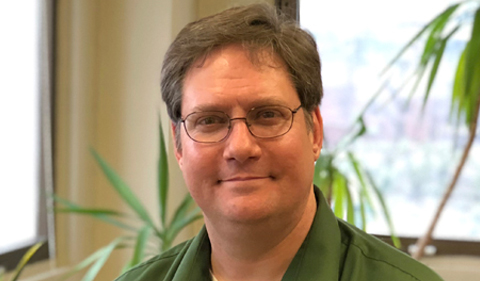By Ling Xin
NQPI Editorial Intern
Nanoscale and Quantum Phenomena Institute 2020 Spring Newsletter
Physics & Astronomy Associate Professor Dr. Eric Stinaff has been re-elected to serve as the Nanoscale and Quantum Phenomena Institute’s director for a third term (2020-23). Stinaff, whose expertise is in experimental condensed matter physics and first became the NQPI director in 2014, has set out three main goals for the years to come.
The first is to increase the number of research proposals from NQPI. Stinaff is looking at ways to help support NQPI members with their grant applications and increase their competitive advantage. One of NQPI’s missions is to develop interdisciplinary collaborations, so it is important to encourage the formation of multi-investigator teams. Stinaff plans to organize formal discussions on specific themes, such as plasmonics and surface chemistry, where the members have shared expertise, and use NQPI resources to foster collaborative proposal submissions to funding agencies including the National Science Foundation and the U.S. Department of Energy.
Secondly, he wants to consolidate infrastructure and build a core facility which NQPI members can use with minimal or no cost for their research. Stinaff envisions this resource as a natural outcome of the construction of the new chemistry building and the renovation of Clippinger Laboratories. He will encourage members to seek support from OHIO and external sources for purchasing new laboratory equipment or upgrading aging facilities.
The third is to build up an alumni and industrial network as a resource for current NQPI students as well as members. The “Bring OUr Alumni Back” seminar series is a good starting point that already has provided connections to OHIO alumni. In the future, using platforms like LinkedIn, NQPI graduates will be connected with current students to offer mentorship on internships, postdoc positions, or job opportunities in academia or the industry.
Since its inauguration in 2001, NQPI has provided “a good community for people working in or close to the field of nanoscience to pursue research and communicate with each other,” said Stinaff. As of March 2020, the Institute has 35 faculty members from physics, chemistry, engineering and a few other departments, together with a total of 91 students.




















Comments